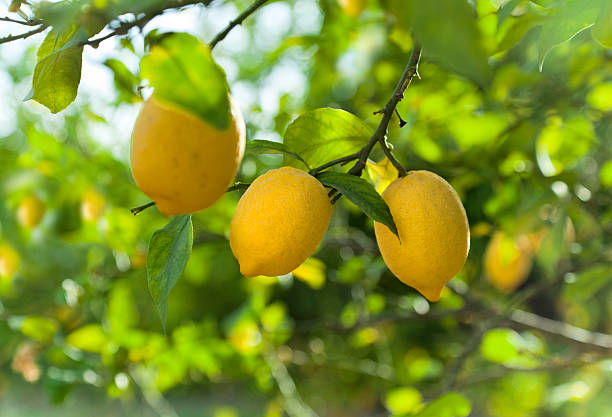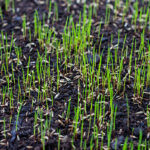
Welcome to our comprehensive guide on lemon trees! If you want to cultivate the warm and vibrant essence of spring and summer in your backyard, lemon trees are the perfect choice. In this article, we’ll provide essential care tips and insights to ensure your lemon tree thrives and yields a bountiful harvest. Whether you’re a seasoned gardener or just starting your citrus journey, we’ve got you covered.
Planting a Lemon Tree
When it comes to planting a lemon tree, timing and location are key. Here’s what you need to know:
When to Plant: Lemon trees should be planted in the early spring, after the last frost has passed.
Selecting a Planting Site: Choose a well-draining location that receives full sun for most of the day. Lemon trees thrive in warm and humid climates, so make sure the site offers protection from strong winds. If you live in an area where freezing temperatures are possible, consider planting your lemon tree on the southwestern side of your house, near a wall, to provide some additional protection.
Spacing, Depth, and Support: Lemon trees can grow up to 20 feet tall and 15 feet wide, so make sure to give them enough space to spread out. Dig a hole twice as wide and deep as the tree’s root ball. If the roots are tightly bound, gently loosen them before planting. Provide support, such as stakes or trellises, if needed.
Why Choose Lemon Trees for Your Home Orchard
Lemon trees offer a multitude of benefits that make them a popular choice for home orchards. Not only are they incredibly easy to grow, but they also bear fruit relatively quickly, even in less-than-ideal climates. With their fresh flavor and remarkable versatility, lemon trees bring a touch of the tropics to your doorstep.
Selecting the Perfect Lemon Tree
Regarding lemon trees, various options are available to suit different preferences and growing conditions. Let’s explore some of our favorite lemon tree varieties that are sure to kickstart your citrus journey:
1. Meyer Lemon

Renowned for its exceptional flavor and adaptability, the Meyer Lemon Tree is a crowd favorite. Unlike other lemon varieties, Meyer Lemons are not typically found in grocery stores due to their thin skin, which is susceptible to bruising. However, this delicate skin allows the citrus juices to develop fully, making it perfect for juices, desserts, and flavoring. Meyer Lemon trees naturally reach a height of 10 to 15 feet, making them an excellent choice for both indoor and outdoor cultivation.
2. Eureka Lemon
If you’re seeking juicy lemons for your patio, the Eureka Lemon Tree is an ideal selection. These dwarf-sized trees offer effortless home-grown fruit and possess excellent drought tolerance. The Eureka Lemon is adaptable to various soil types and conditions, and it thrives without the need for harsh chemicals or extensive pest control measures. With this variety, you can enjoy an abundance of lemons perfect for lemonade or adding a sweet flavor to your culinary creations.
3. Limequat Citrus

Although not a lemon tree per se, the Limequat Citrus Tree is an absolute must-have for any citrus enthusiast. As a cross between a Key Lime Tree and a Kumquat Tree, the Limequat Citrus offers small, oblong fruit with a yellow-green hue similar to kumquats. These delectable fruits possess a unique flavor that combines the sweetness of limes and oranges with a tart aftertaste. Limequats are perfect for snacking, cooking, and adding zest to your favorite beverages.
Care Tips for Lemon Trees
To ensure the health and productivity of your lemon tree, follow these care tips:
Light: Lemon trees thrive in full sun, which means they need at least six to eight hours of direct sunlight daily. Make sure to plant your tree in a location that receives ample sunlight throughout the day.
Soil: Lemon trees prefer well-draining soil with a slight acidity. Avoid heavy clay or compacted soil, as it can lead to root rot. If your soil is not well-draining, consider amending it with organic matter to improve its texture and drainage.
Water: Proper watering is crucial for the success of your lemon tree. Young trees require more frequent watering, especially during hot and dry periods. As the tree matures, it becomes more drought-tolerant, but it’s still important to keep the soil consistently moist. Avoid overwatering, as it can lead to root rot. Monitor the soil moisture and adjust your watering schedule accordingly.
Temperature and Humidity: Lemon trees thrive in warm and humid climates. They are sensitive to cold temperatures and prefer a range of 75 to 85 degrees Fahrenheit. If you live in a region with colder winters, consider bringing your lemon tree indoors or providing it with some protection during the coldest months. Lemon trees also appreciate humidity levels around 50 percent.
Fertilizer: Lemon trees are heavy feeders and benefit from regular fertilization. Use a balanced fertilizer specifically formulated for citrus trees. Apply it according to the manufacturer’s instructions, typically every four to six weeks during the growing season. Avoid over-fertilization, as it can lead to excessive foliage growth at the expense of fruit production.
Common Lemon Tree Varieties

There are several lemon tree varieties to choose from, each with its own unique characteristics. Here are three popular ones:
1. Eureka Lemon (Citrus x limon ‘Eureka’): This variety is widely available in supermarkets and is a popular choice for homegrown lemons. The fruit is juicy and nearly seedless. Eureka lemon trees have a spreading growth habit and are suitable for zones 9 through 11.
2. Lisbon Lemon (Citrus x limon ‘Lisbon’): Lisbon lemons produce juicy, fleshy fruit with few to no seeds. They are slightly less cold-sensitive than other lemon varieties and have an upright growth habit. Lisbon lemon trees are suitable for zones 9 through 11.
3. Meyer Lemon (Citrus x meyeri): Meyer lemons are a hybrid between a mandarin orange and a lemon. They have a sweeter flavor and a compact growth habit. Meyer lemon trees are more tolerant of cold temperatures compared to true lemon varieties. They are suitable for zones 8 through 11.
Harvesting Lemons
The joy of growing your own lemon tree is being able to harvest your own fresh lemons. Here’s what you need to know about harvesting:
Timing: Lemons take about a year to mature from flowers to ripe fruit. Leave the lemons on the tree until they turn yellow and feel firm. They will not ripen further once picked.
Harvesting Technique: To harvest lemons, gently twist the fruit until it detaches from the stem. Alternatively, you can use pruning shears or a sharp knife to cut the fruit from the branch. Be careful not to damage the tree or other fruits in the process.
Pruning Lemon Trees
Pruning is essential for maintaining the health and shape of your lemon tree. Follow these tips for pruning:
Timing: Prune your lemon tree during the late winter or early spring, before new growth begins.
Pruning Goals: The main goals of pruning are to remove dead or diseased branches, improve airflow and light penetration, and shape the tree. Remove any branches that are crossing or rubbing against each other. Maintain a balanced structure with an open canopy to promote healthy growth and fruit production.
Pruning Technique: Use clean and sharp pruning tools to make clean cuts. Sterilize your tools with rubbing alcohol to prevent the spread of diseases. Make cuts just above a leaf node or a lateral branch.
Propagating Lemon Trees

If you want to expand your lemon tree collection, you can propagate them through cuttings. Here’s how:
1. Propagating from Cuttings: Take 3 to 6-inch long cuttings from healthy, new growth. Remove the lower leaves and dip the bottom end of the cutting in rooting hormone. Plant the cutting in a well-draining and moist potting medium. Keep the cutting warm and maintain high humidity by covering it with a clear plastic bag. After a few weeks, check for root development and transplant the cutting into a larger container or the garden once roots are established.
2. Propagating from Seeds: Although propagating lemon trees from seeds can be less predictable, it can still be an interesting project. Extract seeds from a mature lemon, soak them in water for 24 hours, and remove the outer coating. Plant the seeds in a small container with well-draining potting soil and keep them warm and moist. Germination may take several weeks. Keep in mind that lemon trees grown from seeds may not produce the same quality of fruit as the parent tree.
Potting and Repotting Lemon Trees
If you prefer to grow your lemon tree in a container, follow these steps for potting and repotting:
Container Size: Choose a large container that is at least 5 gallons or larger. The container should have ample drainage holes to prevent waterlogging.
Potting Mixture: Fill the container halfway with a well-draining potting mixture specifically designed for citrus trees.
Repotting: When repotting an established lemon tree, gently remove it from its current pot and loosen the roots. Place the tree in the new container and fill in the sides with fresh potting mixture. Avoid burying the crown of the roots. Water the tree thoroughly after repotting.
Overwintering Lemon Trees
In regions with cold winters, it’s important to protect your lemon tree from freezing temperatures. Here’s how to overwinter your lemon tree:
Indoor Placement: Bring your lemon tree indoors to a well-lit location that is not too warm. Cooler indoor temperatures during the winter can actually encourage flowering. Place the tree near a window where it can receive bright, indirect sunlight.
Outdoor Exposure: In late spring, around May, bring your lemon tree back outdoors to encourage natural pollination and fruit growth. Return the tree indoors in September, before the temperatures drop too low.
Humidity Considerations: Lemons trees appreciate higher humidity levels, both indoors and outdoors. Misting the leaves or using a humidifier can help create a more favorable environment for your tree.
Dealing with Pests and Diseases

Unfortunately, lemon trees can be susceptible to various pests and diseases. Here are some common issues to watch out for:
Pests: Citrus leaf miners, aphids, scale insects, and mites are common pests that can infest lemon trees. Regularly inspect your tree for signs of infestation, such as distorted leaves, sticky residue, or visible insects. If necessary, treat the infestation with appropriate insecticides or natural remedies.
Diseases: Lemon trees can be affected by diseases such as citrus canker, melanose, citrus scabs, greasy spot disease, and citrus greening. Monitor your tree for any signs of disease, including spots on leaves, fruit, or stem, yellowing or browning of leaves, or stunted growth. Promptly address any disease issues by following recommended treatment methods or consulting with a professional.
Frequently Asked Questions
Here are answers to some frequently asked questions about growing and caring for lemon trees:
1. How long does it take for a lemon tree to bear fruit? Lemon trees typically start bearing fruit between three and six years of age, depending on the variety and growing conditions.
2. Are lemon trees easy to grow? With the right conditions and care, lemon trees can be relatively easy to grow. They are self-pollinating, which means you don’t need multiple trees for fruit production.
3. Where do lemon trees grow best? Lemon trees thrive in mild winters and warm to hot summer temperatures. They are successfully grown in the sub-tropical “citrus belt” of the United States, which stretches from California along the Gulf Coast to Florida.
With the knowledge and tips provided in this guide, you now have the tools to successfully grow and care for your very own lemon tree. Enjoy the beauty of the tree, the fragrance of its blossoms, and the delicious taste of homegrown lemons. Happy gardening!
Note: This article is for informational purposes only and does not replace professional advice. Always consult with a horticulturist or local gardening expert for specific guidance on growing lemon trees in your area.






